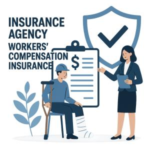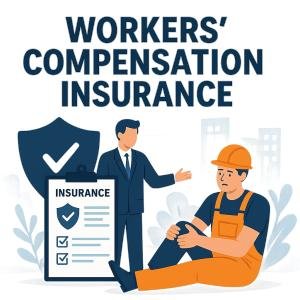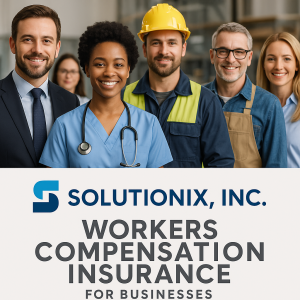
Residential Care Home Workers’ Comp Audit Prep—Step-by-Step
August 1, 2025
Mandatory Workers’ Comp Rules for Staffing Companies
August 1, 2025
Illustration depicting workers’ compensation insurance.
In the nonprofit sector, safeguarding employees through extensive workers’ compensation coverage is not just a legal requirement-it is a crucial component of organizational duty and sustainability. However, many nonprofits face unique financial constraints that make traditional workers’ compensation insurance appear cost-prohibitive. This article explores how nonprofit organizations can secure affordable, high-quality workers’ compensation coverage without compromising on benefits or compliance. By examining tailored solutions, industry best practices, and strategic partnerships, we aim to equip nonprofit leaders with the insights needed to protect their workforce while maintaining fiscal prudence.
Table of Contents
- Understanding Workers compensation Requirements for Non-Profit Organizations
- Evaluating cost-Effective Insurance Options Without Sacrificing Coverage
- Implementing Risk Management Strategies to Minimize Claims and Premiums
- Partnering with Specialized Brokers for Tailored Non-Profit Workers Comp Solutions
- Q&A
- Closing Remarks
understanding Workers Compensation Requirements for non-Profit Organizations
- Mandatory insurance coverage for all paid staff.
- Adherence to state-specific reporting and claim procedures.
- In some cases,exemptions or special provisions based on size or mission.
Understanding these regulations is crucial for non-profits to avoid costly penalties and ensure employee protection. To clarify compliance obligations, organizations should consult with insurance professionals or legal advisors familiar with their state’s workers compensation statutes. Below is a brief overview of typical state requirements for non-profit employers:
| state | Coverage Required | Minimum Employees |
|---|---|---|
| California | Yes | 1 or more |
| Texas | Not mandatory, Optional | N/A |
| New York | Yes | 1 or more |
| Florida | Yes | 1 or more |
Evaluating Cost-Effective Insurance Options Without Sacrificing Coverage
- Eligibility for group or association-based plans that can offer reduced rates.
- Customizable coverage endorsements that align with the non-profit’s specific roles and volunteer involvement.
- Discounts for safety programs and proactive risk management initiatives.
Utilizing a proactive approach to risk mitigation not only enhances workplace safety but often leads to premium reductions and faster claim resolutions. Here’s a concise comparison of common policy features tailored to typical non-profit needs:
| policy Feature | Standard Plan | Non-Profit Tailored Plan |
|---|---|---|
| coverage Limits | $500K | $1M |
| Volunteers Included | Limited | Comprehensive |
| Premium Cost | Moderate | Discounted |
| Claims Support | standard | Priority Service |
Implementing Risk Management strategies to Minimize Claims and Premiums
Non-profits can significantly reduce financial risk by proactively embedding robust risk management practices within their operations. Establishing clear safety protocols and complying with industry regulations not only protects your employees but also substantially lowers the likelihood of workplace injuries.Key measures include:
- Regular employee training on safety procedures customized to the institution’s unique activities
- Comprehensive hazard assessments to identify and mitigate potential risks before incidents occur
- Prompt reporting and management of minor incidents to prevent escalation
- Implementation of wellness programs to reduce workplace fatigue and injury
Moreover, tailoring your risk management strategy can directly impact your workers’ compensation premiums. Insurers often assess claims history and safety initiatives when determining rates. By demonstrating a commitment to minimizing claims through active strategies, non-profits position themselves favorably for premium discounts and better coverage terms. Consider the following simplified comparison table showing how strategic investments in risk management can influence claims and premiums:
| Risk Management Level | annual Claims Frequency | Estimated Premium Savings |
|---|---|---|
| Basic Compliance | 5-7 claims | 0% |
| Enhanced Safety Program | 2-4 claims | 10-15% |
| Comprehensive Risk Management | 0-1 claims | 20-30% |
Partnering with Specialized Brokers for Tailored Non-Profit Workers Comp Solutions
- Risk assessments that identify potential liabilities specific to volunteer and paid staff roles
- Flexible premium structures aligned with fluctuating workforce sizes and seasonal program activities
- Claims management support that prioritizes swift resolution and reduced downtime
- Educational resources to help staff understand safety protocols and minimize workplace incidents
Partnering with a specialized broker also fosters a proactive approach to workers’ compensation. These professionals often provide detailed benchmarking data, enabling your nonprofit to stay competitive and compliant. Consider the comparative analysis below illustrating cost benefits between general and specialized broker partnerships:
| Broker Type | Average Annual Premium | Claim Processing Time | Risk Management Resources |
|---|---|---|---|
| General Broker | $25,000 | 15 days | Basic |
| Specialized Non-Profit Broker | $18,500 | 7 days | Comprehensive |
Q&A
Q&A: Workers Comp for Non-Profits – Affordable Coverage Without Compromise
Q1: Why is workers’ compensation vital for non-profit organizations?
A1: workers’ compensation is crucial for non-profits as it protects both the employees and the organization. It ensures that employees injured on the job receive necessary medical care and wage replacement, while safeguarding the organization from costly legal liabilities and lawsuits. Moreover, compliance with workers’ comp laws is mandatory in most states, regardless of organizational structure.
Q2: What challenges do non-profits face in obtaining workers’ comp coverage?
A2: Non-profits often struggle with limited budgets and resource constraints, which can make traditional workers’ comp insurance seem expensive. Additionally, some insurers may perceive non-profits as higher risk due to diverse volunteer workforces and varying levels of employee training, potentially leading to higher premiums or limited coverage options.
Q3: How can non-profits secure affordable workers’ comp coverage without sacrificing quality?
A3: Non-profits can secure affordable coverage by working with insurers that specialize in non-profit risk profiles and understand their unique needs. Bundling policies, implementing robust workplace safety programs, and properly classifying employees and volunteers can also reduce premiums.Furthermore, leveraging group purchasing arrangements or associations may provide cost efficiencies.
Q4: Are volunteers covered under workers’ compensation policies for non-profits?
A4: Coverage for volunteers varies by state and policy. Some workers’ comp policies extend coverage to volunteers, while others do not. Non-profits should carefully review their policies and consult with insurance providers to ensure appropriate protection is in place for their volunteer workforce, as unpaid volunteers frequently enough contribute significantly to organizational operations.
Q5: What steps should non-profits take to maintain compliance and mitigate risks related to workers’ comp?
A5: Non-profits should ensure active compliance with state workers’ comp requirements, maintain accurate employee records, and promptly report workplace injuries. Implementing safety training programs and regular workplace assessments can reduce the incidence of injuries. Additionally, working closely with insurance brokers or legal advisors helps non-profits stay informed of regulatory changes and optimize their coverage strategy.
Q6: Can non-profits tailor workers’ compensation programs to their specific operational needs?
A6: Yes, non-profits can customize their workers’ comp policies to match their unique risk environments. This may include selecting coverage limits appropriate to their workforce size and exposure, choosing carriers experienced with non-profit sectors, and integrating loss prevention services. Tailored programs help ensure organizations do not overpay while still maintaining comprehensive protection.
Q7: What are the benefits of partnering with specialized insurers for non-profits?
A7: Specialized insurers offer deeper insights into the non-profit sector,provide competitive pricing,and design coverage options that reflect the operational realities of such organizations. They often offer value-added services like risk management consulting and claims advocacy, which help non-profits manage costs and protect their missions effectively.
This Q&A provides a concise overview for non-profit leaders and financial officers seeking cost-effective workers’ compensation solutions without compromising coverage quality or compliance.
Closing Remarks
securing workers’ compensation coverage tailored to the unique needs of non-profit organizations is not only achievable but essential for safeguarding both employees and the mission at hand. By exploring affordable options that do not compromise on quality or compliance, non-profits can maintain a stable workforce and focus on their core objectives with confidence.Investing in the right workers’ comp plan ultimately supports organizational resilience and long-term success, reinforcing a commitment to the well-being of those who drive meaningful impact.
“This content was generated with the assistance of artificial intelligence. While we strive for accuracy, AI-generated content may not always reflect the most current information or professional advice. Users are encouraged to independently verify critical information and, where appropriate, consult with qualified professionals, lawyers, state statutes and regulations & NCCI rules & manuals before making decisions based on this content.






